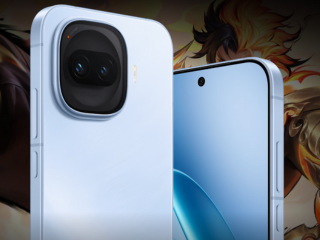- Home
- Science
- Science News
- Boeing Starliner Capsule Safely Lands on Earth, to Get Ready for NASA’s Crewed Mission in Future
Boeing Starliner Capsule Safely Lands on Earth, to Get Ready for NASA’s Crewed Mission in Future
While Starliner was parked to ISS, some of the astronauts boarded the capsule to analyse its cabin conditions.

Photo Credit: Reuters
It was launched from the Cape Canaveral US Space Force Base in Florida
Boeing's Starliner astronaut capsule returned from the International Space Station and landed in New Mexico on Wednesday, capping a high-stakes test flight as NASA's next vehicle for carrying humans to orbit.
Less than a week after its launch from the Cape Canaveral US Space Force Base in Florida, the CST-100 Starliner capsule plunged through Earth's atmosphere Wednesday evening ahead of a parachute-assisted descent over the desert of White Sands Space Harbor, New Mexico. It touched down on time at 6:49pm EDT (22:49 GMT).
The roughly five-hour return trip from the space station, an orbital outpost some 250 miles above Earth, checks off the last leg of a repeat test flight that Boeing had first attempted in 2019, but failed to complete after running into software failures.
The latest test mission moves Starliner, beset by repeated delays and costly engineering setbacks, a major step closer to providing NASA with a second reliable avenue for ferrying astronauts to and from the space station.
Starliner was lofted to orbit last Thursday atop an Atlas V rocket furnished by the Boeing-Lockheed Martin joint venture United Launch Alliance and achieved its main objective – a rendezvous with the ISS, even though four of its multiple onboard thrusters malfunctioned along the way.
Boeing engineers also had to improvise a workaround for a thermal control defect during the final approach of the capsule to the space station.
Since resuming crewed flights to orbit from American soil in 2020, nine years after the space shuttle programme ended, the US space agency has had to rely solely on Falcon 9 rockets and Crew Dragon capsules from billionaire Elon Musk's private company SpaceX.
Previously, the only other option for reaching the orbiting laboratory was by hitching rides aboard Russia's Soyuz spacecraft, an alternative currently less attractive in light of heightened US -Russian tensions over the war in Ukraine.
Much is on the line for Boeing, as the Chicago-based company scrambles to climb out of successive crises in its jetliner business and space-defense unit. The Starliner programme alone has cost the company nearly $600 million (roughly Rs. 4,655 crore) over the past two and two and half years.
An ill-fated first orbital test flight of Starliner in late 2019 nearly ended with the vehicle's loss following a software glitch that effectively foiled the spacecraft's ability to reach the space station.
Subsequent problems with Starliner's propulsion system, supplied by Aerojet Rocketdyne, led Boeing to scrub a second attempt to launch the capsule last summer.
Starliner remained grounded for nine more months while the two companies sparred over what caused fuel valves to stick shut and which firm was responsible for fixing them.
The do-over test mission that wrapped up on Wednesday could pave the way for Starliner to fly its first astronaut crew to the space station sometime next year, pending a redesign of Starliner's propulsion system valves and a resolution of the thruster issues that popped up mid-mission.
The orbiting outpost is currently home to a crew of three US NASA astronauts, an Italian astronaut from the European Space Agency, and three Russian cosmonauts. While Starliner was parked to the station, some of those astronauts boarded the capsule to analyse its cabin conditions.
© Thomson Reuters 2022
Catch the latest from the Consumer Electronics Show on Gadgets 360, at our CES 2026 hub.
Related Stories
- Samsung Galaxy Unpacked 2025
- ChatGPT
- Redmi Note 14 Pro+
- iPhone 16
- Apple Vision Pro
- Oneplus 12
- OnePlus Nord CE 3 Lite 5G
- iPhone 13
- Xiaomi 14 Pro
- Oppo Find N3
- Tecno Spark Go (2023)
- Realme V30
- Best Phones Under 25000
- Samsung Galaxy S24 Series
- Cryptocurrency
- iQoo 12
- Samsung Galaxy S24 Ultra
- Giottus
- Samsung Galaxy Z Flip 5
- Apple 'Scary Fast'
- Housefull 5
- GoPro Hero 12 Black Review
- Invincible Season 2
- JioGlass
- HD Ready TV
- Laptop Under 50000
- Smartwatch Under 10000
- Latest Mobile Phones
- Compare Phones
- iQOO Z11 Turbo
- OPPO A6c
- Samsung Galaxy A07 5G
- Vivo Y500i
- OnePlus Turbo 6V
- OnePlus Turbo 6
- Itel Zeno 20 Max
- OPPO Reno 15 Pro Mini 5G
- Lenovo Yoga Slim 7x (2025)
- Lenovo Yoga Slim 7a
- Realme Pad 3
- OPPO Pad Air 5
- Garmin Quatix 8 Pro
- NoiseFit Pro 6R
- Haier H5E Series
- Acerpure Nitro Z Series 100-inch QLED TV
- Asus ROG Ally
- Nintendo Switch Lite
- Haier 1.6 Ton 5 Star Inverter Split AC (HSU19G-MZAID5BN-INV)
- Haier 1.6 Ton 5 Star Inverter Split AC (HSU19G-MZAIM5BN-INV)

















